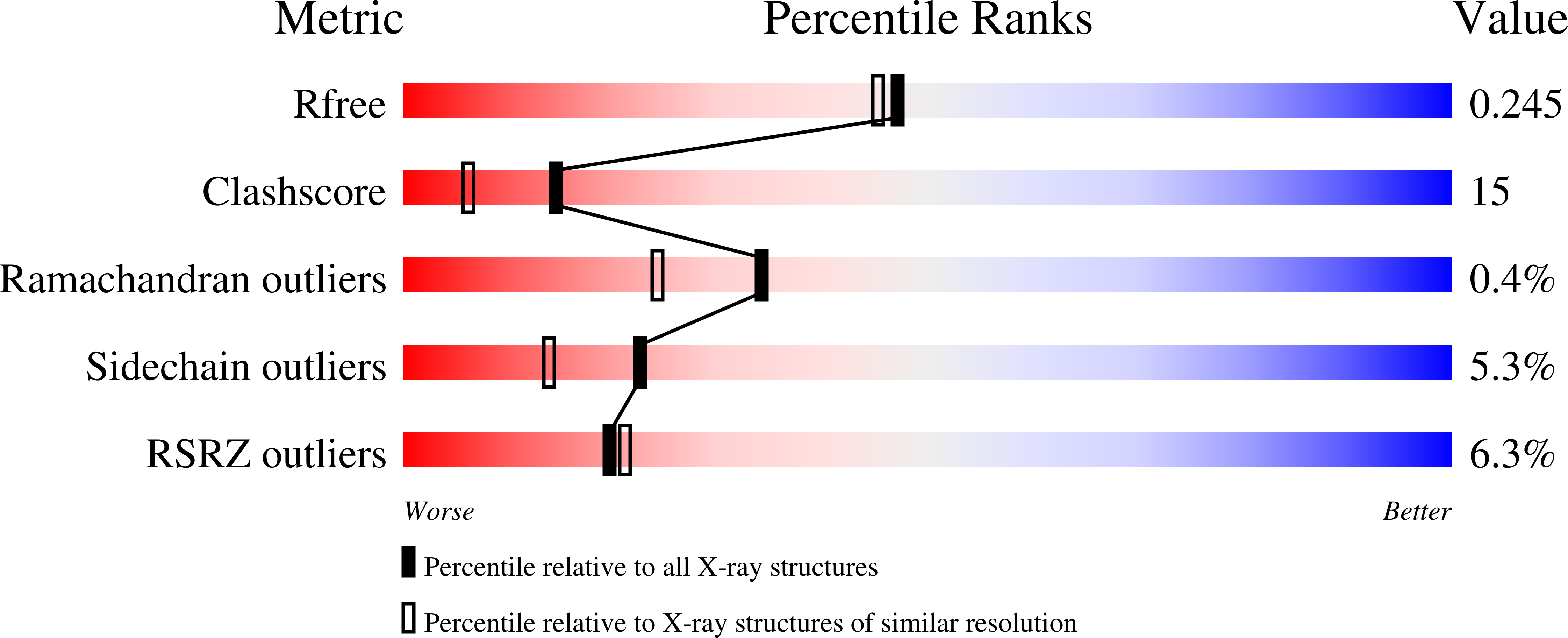Structure and mechanism of Helicobacter pylori fucosyltransferase. A basis for lipopolysaccharide variation and inhibitor design.
Sun, H.Y., Lin, S.W., Ko, T.P., Pan, J.F., Liu, C.L., Lin, C.N., Wang, A.H., Lin, C.H.(2007) J Biol Chem 282: 9973-9982
- PubMed: 17251184
- DOI: https://doi.org/10.1074/jbc.M610285200
- Primary Citation of Related Structures:
2NZW, 2NZX, 2NZY - PubMed Abstract:
Helicobacter pylori alpha1,3-fucosyltransferase (FucT) is involved in catalysis to produce the Lewis x trisaccharide, the major component of the bacteria's lipopolysaccharides, which has been suggested to mimic the surface sugars in gastric epithelium to escape host immune surveillance. We report here three x-ray crystal structures of FucT, including the FucT.GDP-fucose and FucT.GDP complexes. The protein structure is typical of the glycosyltransferase-B family despite little sequence homology. We identified a number of catalytically important residues, including Glu-95, which serves as the general base, and Glu-249, which stabilizes the developing oxonium ion during catalysis. The residues Arg-195, Tyr-246, Glu-249, and Lys-250 serve to interact with the donor substrate, GDP-fucose. Variations in the protein and ligand conformations, as well as a possible FucT dimer, were also observed. We propose a catalytic mechanism and a model of polysaccharide binding not only to explain the observed variations in H. pylori lipopolysaccharides, but also to facilitate the development of potent inhibitors.
Organizational Affiliation:
Institute of Biochemical Sciences, National Taiwan University, Taipei 10642; Institute of Biological Chemistry, Academia Sinica, No.128 Academia Road Section 2, Nan-Kang, Taipei 11529, Taiwan.

















